
Teacher
Guide
Welcome to PYP How, Where, Who, Share!
PYP How, Where, Who, Share! is an activity-based workbook created just for PYP students. Suitable for use in class or at home, this child-friendly workbook helps students to understand how the transdisciplinary themes can be used to explore the world around them.
Children (and also parents) are guided through this book by friendly bug characters offering advice and asking open-ended questions to encourage further reflection. With questions and activities tailored to the PYP themes and key concepts, this workbook encourages children to use the given information as a starting point on their own exploration of the topics. The author of PYP How, Where, Who, Share! has created this free Teacher Guide to give educators ideas for how to use the books – whether this be in class or for use at home.
This book is for children in PYP Year 3 /Grade 2. If you do not have the book yet, you can order a free e-inspection or buy the book here.
Included in this free Teacher Guide
Each chapter in this free Teacher Guide maps to a chapter in PYP How, Where, Who, Share! and gives page-by-page support to help you use the tasks with children. Please feel free to comment with any other suggestions for using the books or any recommendations you have for changes for the rest of the IB Primary Years Programme community.
In each section of this Teacher Guide you will find the following.
- The central idea on which the workbook chapter was based.
- The relevant key concepts related to each chapter.
- The approaches to learning skills students will get the chance to demonstrate.
- Examples of how you can introduce the chapter to children.
- Key questions you can ask children as they work through the book.
- Alternative or additional activity ideas.
Below is an overview table for the chapters in the book. It gives you a holistic view of the year, highlighting which approaches to learning and key concepts are covered in each chapter. As you can see, research skills underpin all the units, with children having the opportunity to carry out focused and independent research multiple times throughout the year.
Contents list
Find page-by-page for the workbook by navigating through the sections below!

Introduction to PYP How (For PYP 3)
Welcome to this free teacher guide for the workbook: PYP How, Where, Who, Share! This guide includes page-by-page support for the activities in the book. Before starting, children get the opportunity to design their own PYP Agents badge at home or as the class settles. This can be a picture of whatever they want and helps them to feel their workbook has been personalized for them.
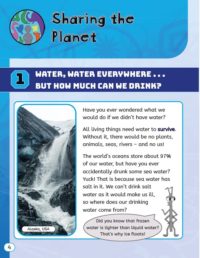
Chapter 1. Sharing the Planet
Help children to inquire into How the World Works by understanding that water is shared by all living things and is a finite resource.
CAUSATION: importance of the water cycle to life on Earth; why the different states of matter are important to the water cycle.
FUNCTION: how the water cycle works.
RESPONSIBILITY: responsibility to protect and conserve water.
PERSPECTIVE: people’s access to water.
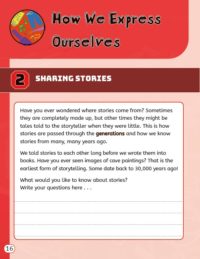
Chapter 2. How We Express Ourselves
Help children inquire into How We Express Ourselves by understanding that storytelling is used all over the world to share events and ideas.
CAUSATION: why stories changed over time.
CONNECTION: how older civilizations used stories to explain the world around them.
PERSPECTIVE: myths can be different depending on the culture.
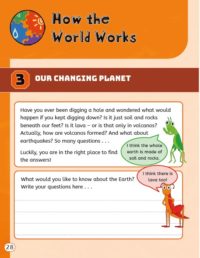
Chapter 3. How the World Works
Help children to inquire into How the World Works by understanding that The Earth’s structure is always changing.
FORM: how our Earth is structured.
CAUSATION: why we have volcanoes and earthquakes.
RESPONSIBILITY: how we monitor earthquake and volcanic activity.
PERSPECTIVE: focus on people who live in volcanic active zones.
CONNECTION: how the earth’s structure relates to volcanos and earthquakes.
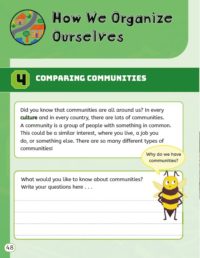
Chapter 4. How We Organize Ourselves
Help children to inquire into How We Organize Ourselves by understanding that we are all part of different groups and communities.
PERSPECTIVE: How communities change depending on when and where we live.
CHANGE: How communities change over time.
RESPONSIBILIY: How our role in a community impacts others.
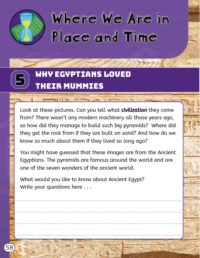
Chapter 5. Where We Are in Place and Time
Help children inquire into Where We Are in Place and Time by understanding how ancient civilizations still have an impact on our lives today.
FUNCTION: how mummification works, how to read hieroglyphics.
CONNECTION: Ancient Egyptian technology still used today.
PERSPECTIVE: why certain people were mummified.
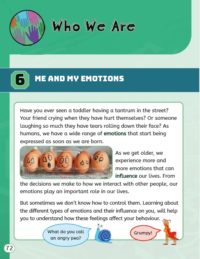
Chapter 6. Who We Are
Help children to inquire into Who We Are by understanding that everyone has emotions with different ways to manage them.
CONNECTION: understand that emotions can impact our lives.
PERSPECTIVE: know that everyone has emotions.
RESPONSIBILITY: learn strategies to control emotions.


